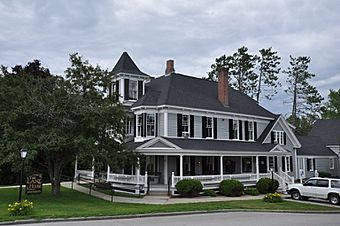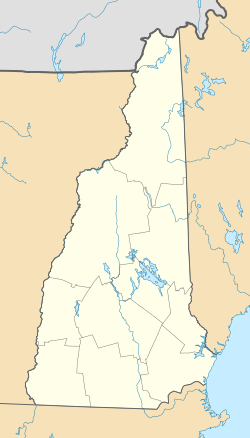Edward H. Lane House facts for kids
Quick facts for kids |
|
|
Edward H. Lane House
|
|
 |
|
| Location | 16 Cottage St., Littleton, New Hampshire |
|---|---|
| Area | 4.5 acres (1.8 ha) |
| Architectural style | Greek Revival, Queen Anne, Cape Cod |
| NRHP reference No. | 80000286 |
| Added to NRHP | December 8, 1980 |
The Edward H. Lane House is a historic home located at 16 Cottage Street in Littleton, New Hampshire. It was built around 1830 and shows how building styles and the town's economy changed over time. The front part of the house, built later in the 1800s, is a great example of the Queen Anne Victorian style. This special house was added to the National Register of Historic Places in 1980.
About the Edward H. Lane House
The Edward H. Lane House is just outside the main shopping area of Littleton. You can find it on the east side of Cottage Street, which is also U.S. Route 302. It sits just south of the Ammonoosuc River.
What Does the House Look Like?
This house is like a typical old New England farmstead. This means the main house is connected to a barn by several added sections. The oldest part of the house was built between 1830 and 1850. It's a 1⁄1 story wooden house built in the Greek Revival style, similar to a Cape-style home.
Today, this older part is an "ell" (a wing) attached to the larger, main house. The main house is 2⁄1 stories tall and built in the fancy Queen Anne style. It has a round tower called a turret and decorative gables (the triangular parts of a roof). The older part of the house is also connected to a barn from the late 1800s by another addition.
A Story of Growth in Littleton
The way the Edward H. Lane House was built tells a story about how Littleton grew. The oldest part of the house is quite simple. It shows that Littleton was mostly a farming community back then.
Later in the 1800s, Littleton's industries grew quickly. This brought more money and allowed for the building of the much larger and more detailed front section of the house. This newer part has beautiful details like fancy cornices (decorative moldings) and porches. Today, the building is used as apartments.



